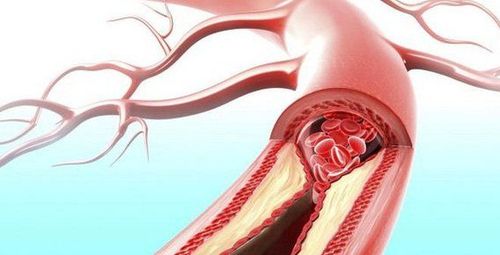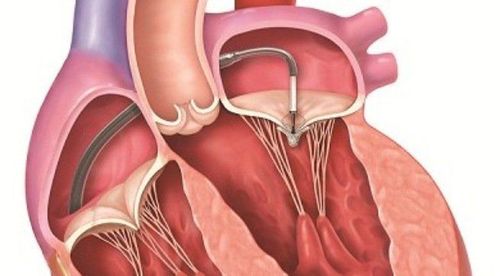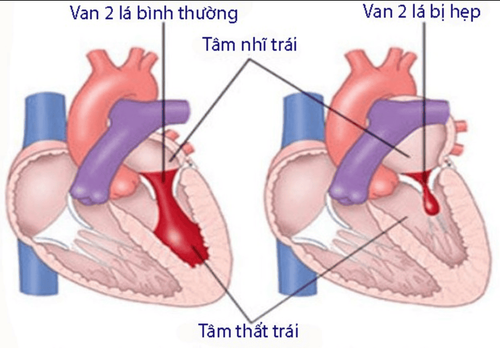This is an automatically translated article.
The article was professionally consulted by Dr. Nguyen Van Duong - Interventional Cardiologist - Cardiovascular Center - Vinmec Central Park International General Hospital.The following stories shared by our clients will give an overview of the treatment, recovery time and hospital discharge of patients who have undergone percutaneous valve replacement (TAVI).
1. Customer stories
Ms. Tran Thi Thom (69 years old, in Nguyen Cong Hoan, Hanoi), a patient underwent percutaneous aortic valve replacement at the Cardiovascular Center, Vinmec Times City International General Hospital.Hospitalization with aortic valve stenosis, heart failure along with a series of comorbidities such as hypertension, diabetes, especially unexplained thrombocytopenia, a difficult factor for doctors during treatment.
The doctor at the Cardiovascular Center, Vinmec Times City International General Hospital - who directly treated Ms. Thom said: "Ms. Thom's health condition when she was hospitalized was very bad, an asthma attack appeared. Cardiopulmonary edema, which can suddenly die at any time, requires early surgery. Her platelet count dropped to only 80, so the hospital conducted a platelet transfusion to avoid the risk of bleeding and ensure safety when performing the intervention. The doctor also added that with her current condition, percutaneous aortic valve replacement (TAVI) is the safest method for her.
At Vinmec, Mrs. Thom is well taken care of. She was able to return home after only 4 days of follow-up after the TAVI procedure. At the next follow-up visit, all test results showed that the heart valve was working normally, the platelet count was normal, she was able to walk well, and took care of her grandchildren and helped her children.
April 2016, Mr. Nguyen Van Ngu (77 years old, from Viet Tri, Phu Tho) went to the doctor and was diagnosed with heart valve disease but did not receive treatment. His condition is quite serious. He suffered from constricted aortic valve stenosis, heart failure accompanied by high blood pressure, if not operated, he could die suddenly at any time.
The treatment process for him has also become more difficult, because Mr. Ngu is old and has obstructive ventilation disorder. Surgery carries a high risk of death. Therefore, percutaneous aortic valve replacement (TAVI) is the best solution for him, both reducing the risk of bleeding and avoiding complications.
At the same time, the doctor also added that the patient's recovery time is also faster - only 5 to 7 days for percutaneous valve replacement compared to 2 weeks for open surgery.
The TAVI intervention for Mr. Ngu was successful beyond expectations. The surgery lasted only 2 hours, more importantly, the patient recovered quickly after only 2 days of follow-up, was able to walk, no breathing difficulties and eat normally. He recovered and was discharged from the hospital in the next 3 days.
Doctor Nguyen Thi Tu (60 years old, living in Thoi Hoa, Vinh Long) a patient was supported to replace the aortic valve from the charity program of Thien Tam Foundation (Vingroup).
However, the procedure requires a team of experienced doctors because the patient has many diseases that directly affect the surgery such as ischemic heart disease, type 2 diabetes, chronic kidney disease stage 3. The difficulty multiplied when the doctors discovered that the patient had severe calcification of the aortic valve. If the dose of contrast is not carefully considered, it may affect the failure of the TAVI procedure and also worsen renal failure.
Regardless of the investment in researching the most appropriate method, the surgery was successful as expected. In 2 hours on the operating table, the patient only has to perform local anesthesia instead of general anesthesia like other cases. After the procedure, Tu was able to walk and do normal activities after 24 hours and was discharged from the hospital after 5 days of follow-up.
Re-examination after 7 days, showing that his health condition has improved, he has regained the joy from everyday life that he has not been able to do for a long time.
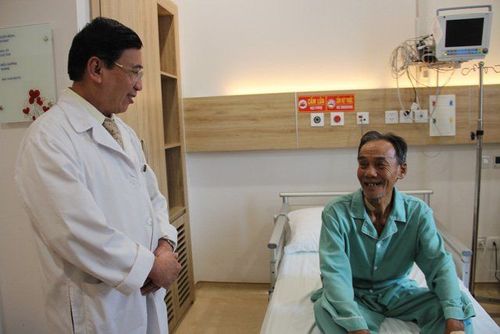
Because Mr. V is a rare Rh (-) blood type, the doctors have made careful calculations to ensure his life safety. The hospital used two ways, both to prepare blood for backup in case of anemia and to use the method of blood transfusion (the entire amount of blood flowing out during surgery will be kept and cleaned by a cell saver machine. , then transfused back to the patient himself, ensuring that the patient is not anemic during surgery and does not have to receive "foreign" blood from someone else's body).
After careful calculation, Mr. V. had surgery to replace the mechanical aortic valve. After 2 weeks of surgery and rehabilitation Mr. V. was discharged with stable health.
Thus, for aortic valve replacement, depending on the patient's health and immunity, the recovery and discharge time ranges from about 4 days to several weeks. This modern surgical method has brought a happier and happier life to heart failure patients, helping them return to work and normal activities.
2. Percutaneous valve replacement technique (TAVI)
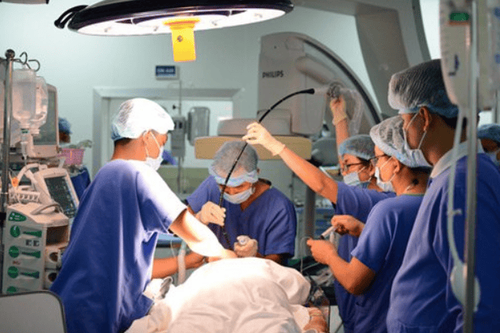
Indicated subjects:
Patients (>= 60 years old) with severe aortic stenosis (valve area < 1 cm2; mean transvalvular pressure gradient > 40 mmHg), with symptoms and prognosis > one year. Have aortic and peripheral artery anatomy appropriate to the technique. Have a desire to perform TAVI. Approved by the "cardiovascular team" (heart team including internal cardiologist, cardiothoracic surgeon, interventional cardiologist, anesthesiologist) approved. Absolute contraindications :
Organization:
No “heart team” and cardiac surgery unit on site. There is no approval of the “cardiovascular team”. Clinical:
Prognosis of survival < 1 year. Does not improve quality of life because of other comorbidities. Other severe valvular disease associated with multiple valve replacement is indicated. Anatomy:
Aortic valve ring <18mm or >29mm. Thrombosis in the left ventricle Progressive endocarditis. High risk of occlusion from the coronary artery: Coronary artery–aortic valve floor <10mm (risk of coronary foramen occlusion and complete atrioventricular block) Atherosclerotic plaque with mobile thrombus in the aorta ascending, aortic arch. Access via femoral artery: femoral artery or small iliac artery (d < 6mm), severe calcification. Relative contraindications:
Non-calcified aortic valve or 2-piece aortic valve. Have coronary artery disease requiring revascularization but not yet. Hemodynamic instability. LVEF < 20%. Procedure:
Step 1: The patient will be performed laboratory tests (echocardiography, CT scan as well as other blood tests) to assess the compatibility of heart valve structure and blood vessels in terms of resolution. surgery. Coronary angiography and aortic arch, access artery assesses the extent of damage to the coronary system, the degree of calcification of the aortic valve as well as the vascular access.
Step 2: Consult through the "cardiology team" to get a consensus and appropriate appointment for the patient. Explain to patients and relatives the indications, costs, possible complications before, during and after the procedure.
Step 3: Do the trick.
3. Why should this technique be done at Vinmec?
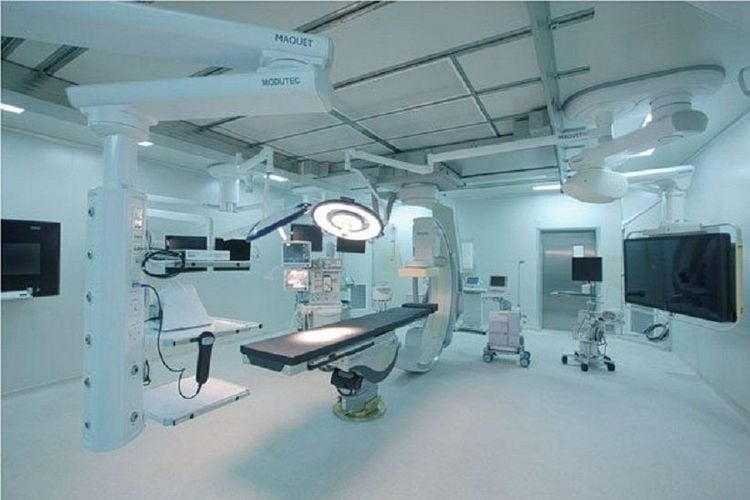
Please dial HOTLINE for more information or register for an appointment HERE. Download MyVinmec app to make appointments faster and to manage your bookings easily.





